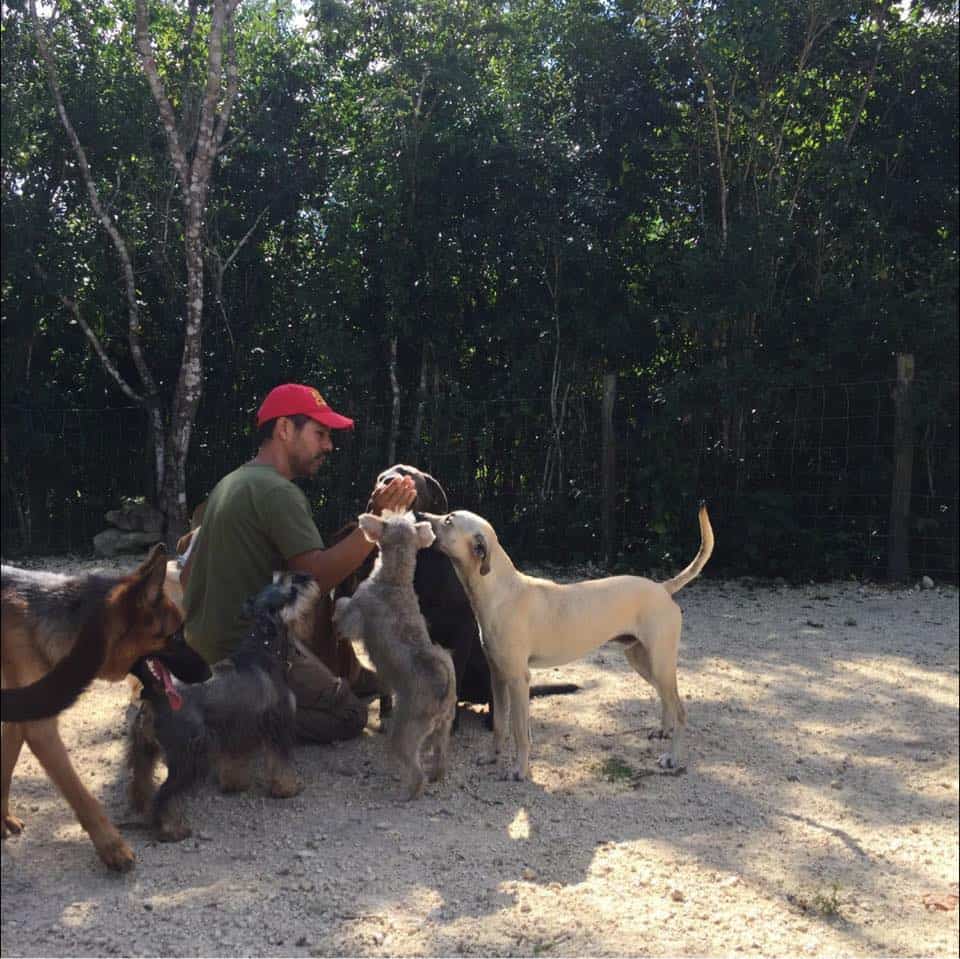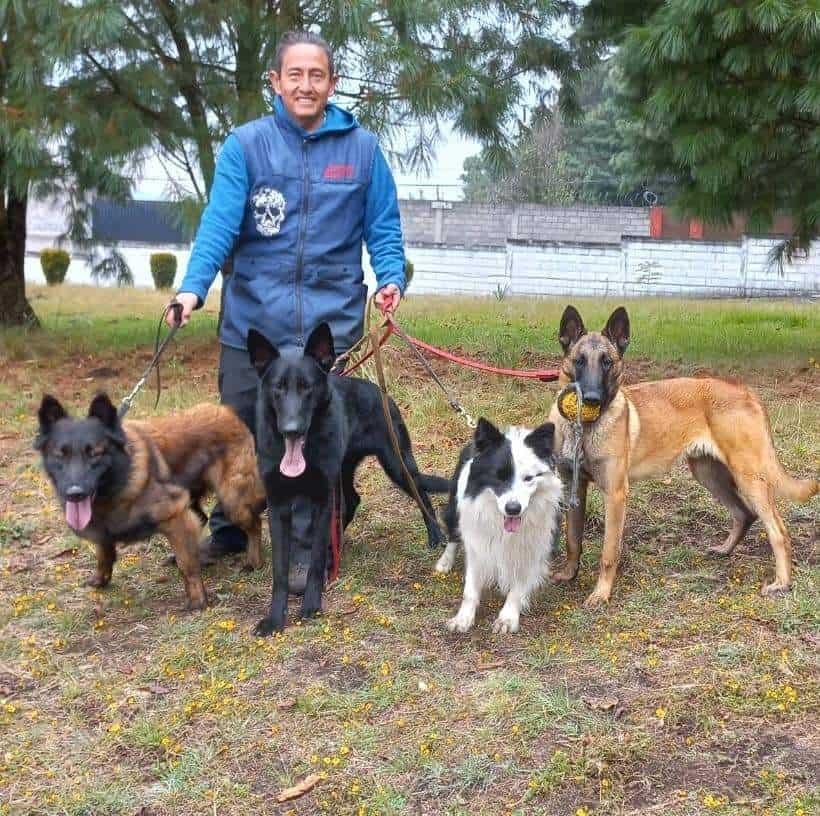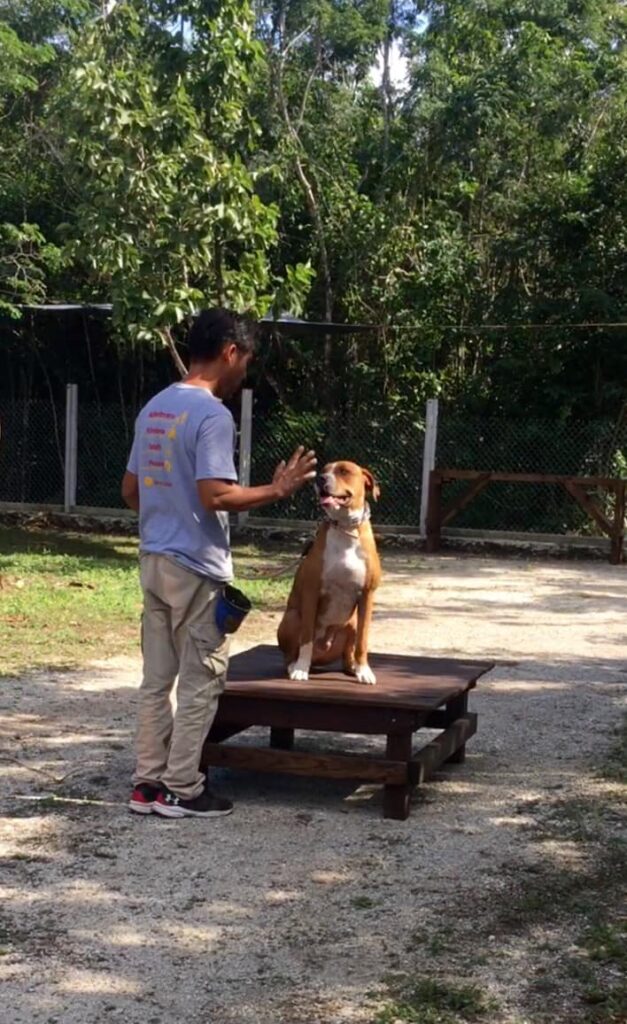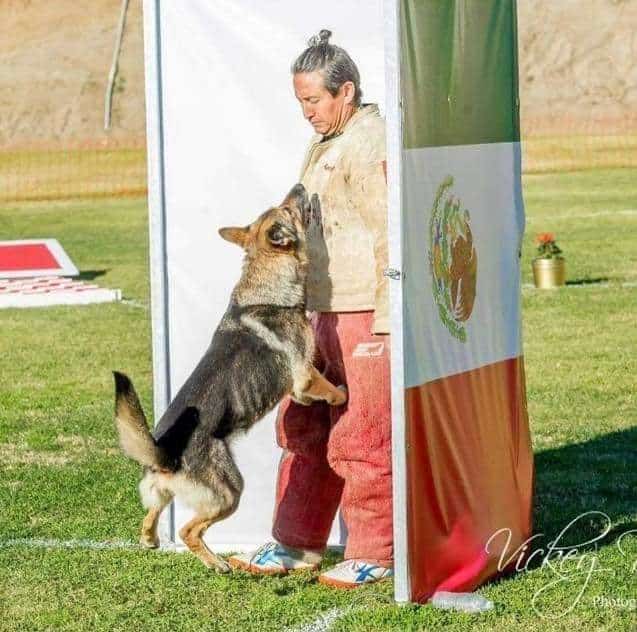At the School for Dog Trainers, we have been fortunate to welcome students from all corners of the globe. Since 2006, we have had students attend our programs from over thirty countries, spanning all six inhabited continents. The diversity among the students who attend our School helps to bring new perspectives to our understanding of dog training, as experiences of dog ownership and dog training vary from nation to nation. We offer an International Scholarship each year to help encourage overseas dog trainers to bring their viewpoints to our School.
When you stop to think about it, it makes sense that every country has its own ‘dog culture’. Dog culture can be influenced by many things – essentially, these are the characteristics, traits or factors that define how dogs are perceived in a given country. Factors that can influence dog culture include:
- Overall attitudes towards dogs (some nations take pride in their dog ownership, and revere canines as members of the family; other countries treat dogs less favorably)
- Weather/climate (in areas with colder weather conditions, double-coated breeds are more popular; in warmer climates, it may be harder to work with dogs outdoors due to the potential for heat exhaustion)
- Prevalence of dog training (whether there is a clear emphasis on high standards of dog training, with opportunities for dogs to learn additional skills or partake in new activities)
- Socioeconomic factors (in wealthier areas – not just comparing one nation to another, but even within more affluent parts of the same nation – there is typically more opportunity for dog owners to invest in their dog’s training, diet, health, etc.)
- Political/legislative issues (where laws are introduced to address specific issues surrounding dog ownership – and more specifically, dog training)

This article is the first in a new series on our blog which will see us speak to dog trainers around the world. We want to get their unique perspectives – what makes the dog culture in their country different? Is dog training a priority for the owners they interact with? What kind of activities do dog owners in their nation like to participate in?
Our hope, through this series of articles, is to gain a better understanding of the similarities and differences in dog culture around the world. As we move from country to country, we will be learning more about the challenges that dog trainers face in their own nation. Understanding these viewpoints isn’t only interesting, but also helps us to gain a broader understanding of dog training as a whole, and its place in our world.
For our first article, we spoke to three dog trainers in Mexico!
According to data sourced by Statista, Mexico’s pet population is just over 28 million – with 17 million of those being dogs. Known for breeds like the Chihuahua and Xoloitzcuintli, dog ownership is clearly common in Mexico – but how do attitudes towards dogs differ from the United States?
We spoke to three expert dog trainers to learn more. Our panel for this article comprised the following dog trainers:

Manuel Guevara
Living in Mexico City, Manuel is a dog trainer who specializes in sport and competition dogs.

Alejandra Vázquez Bracho Illescas
Alejandra is a dog trainer from Mérida, the capital of the state of Yucatan. Alejandra is a recent graduate from the Master Dog Trainer program at the School for Dog Trainers.

Mario Venegas
Based on the island of Cozumel, Mario runs a dog training business – Educan Cozumel – offering dog training, behavior modification, boarding, and grooming services.
Differences in attitudes towards dogs in Mexico
Firstly, we asked our trainers to explain some of the key differences between general attitudes towards dogs in Mexico, compared with the United States.
“There are quite a few differences,” explains Alejandra. “First, and the main one, is how pets are viewed in Mexico. There are two groups of people from what I get to see.
In the first group, these owners see their dogs as outside pets. In fact, the majority of dogs in Mexico are outside pets, especially if they are medium or large in size. Keeping dogs inside is not as common, and is mainly for medium or small breeds such as Schnauzers, Chihuahuas, Cockers and mini-Poodles. These dogs are given kibble and food scraps, bark towards people at the door, go for walks, play fetch, and only go inside occasionally.
In the second group, there are owners who treat their dogs as babies and humanize them, attaching anthropomorphic characteristics.
Comparing dogs in Mexico with dogs I have seen in other countries, I would say that dogs in the US and Canada are more included in daily routines and spend most of their time in the house. More money is also spent on the dog (for example, on toys, beds, nutrition, treats, and veterinary appointments).”
Manuel and Mario both agreed with Alejandra’s assessment.
“Mexico is very strongly influenced because of its proximity, so the attitudes are very similar,” says Manuel. “But there are definitely two extreme currents – either you’re a big animal lover, or you have very little interest or care for them. I have visited several countries around the world (Colombia, USA, Puerto Rico, Costa Rica, Canada, France, Belgium, Spain, Italy, etc.), and it seems to me that Mexico is a little behind in terms of information regarding responsible ownership of dogs.”
“Among the big differences I have noticed, is that in the United States, people want the dogs to be a big part of the family and integrate it,” adds Mario. “Unlike in some parts of Mexico – for example. Cozumel – when I arrived there, they actually used the dog to look after the house like a guard dog.”
Furbabies - or mere pets?
Over the past couple of decades, the furbaby phenomenon has swept the United States – with some pet dogs treated more favorably than human members of the family. We asked our trainers if dog owners in Mexico have started to treat their dogs in this manner – or if they still treat their dogs as simple household pets.
“In Mexico, the phenomenon is extreme,” says Manuel. “Your dog is either a furbaby or a yard dog.
On one side, the furbabies go to shopping malls in strollers and fancy dresses. A few owners leave their dogs at doggy daycares or dog hotels, due to the mistrust of not having CCTV for their surveillance, or not being able to talk to them via the Internet.
But there’s also the other extreme, where dog owners don’t love their dog quite so much. When those owners go on vacation, they just leave a portion of food or ask the neighbor or a family member to go once or twice a day to feed the dog.”

Mario says he has identified a change in Cozumel over the past couple of decades.
“As I mentioned previously, in the past, dogs were just treated as pets and mainly used to guard places. Now, it’s different. Looking at Cozumel – which is where I have lived for 20 years – the dog has come to have more priority and people are understanding that they should respect them more.”
Alejandra concludes that whilst the furbaby movement is spreading, it still has a way to go to catch up with the US.
“I think it depends mainly on the education of the owners,” she says. “The furbaby phenomenon is striking Mexico, but it only started a couple of years ago, and it’s more uncommon. People do see dogs as loved members of the family, but there is a clear distinction between the type of care and love they are given – they are considered important but strictly seen as pets.”
Is dog training important to owners in Mexico?
Depending on the behavior of the dogs you encounter, you may have your own perspective on whether dog training is a priority for dog owners in the United States. However, one thing is for sure – there is no shortage of activities available if owners want to work with their dog. From basic obedience classes, to board and train programs, and even specialized training like scent work or search and rescue, dog owners have a range of options for training their dog.
We asked our panel of experts if dog training is a priority for dog owners in Mexico, and if it is important for dogs to be obedient and well-behaved.
“Unfortunately, it is not important, nor is it a priority,” says Manuel. “In my experience, 90% of people who train their dog do it because there is an urgent problem to be solved (such as a bite, accident or other bad behavior), or for security reasons.
The other 10% do it to have a healthy coexistence with their dog, or for sports purposes. But for the majority of the population, dog training is not a priority, it is mainly seen as an expense.”

Alejandra agreed, although she says there are signs of a change on the horizon.
“Sadly, for the majority of people, dog socialization and dog training is not common. It is just something they resort to when things start to get out of hand. I would like to point out, however, that awareness and dog education in Mexico is increasing among pet owners.”
Mario echoed the final point made by Alejandra, showing that a cultural shift may be occurring in the way dog owners in Mexico perceive dog training.
“I do consider that the owners do see the training as something more important,” says Mario. “It gives them a way to live together and connect with their pet.”
If this trend continues, there may be increased opportunities for dog trainers in Mexico. If pet owners consider the investment in their dog’s training as a worthwhile endeavor, it is more likely that an increased range of dog training options and classes may become available in the country. In fact, our panel stated that there is already an interest in pursuing activities outside of traditional obedience and control.

“Other than obedience, dog owners in Mexico like to walk and exercise with their dogs,” explains Mario. “They like to go to parks to give them some socialization.”
“There is a community of people that do dog sports, confirmation, agility, and things like that,” says Alejandra. “It is not by any means as big or as popular as it is in the US. As a child, I used to go to obedience and conformation events around Mexico, but it was really small compared to things like the AKC National Championship or the Westminster Dog Show. In general, people spend way more time and money on their dogs in the US.”
As a dog trainer specializing in protection sports like French Ring, Manuel has seen first-hand how these types of activities are starting to increase in popularity – although he concedes there is still room for growth.
“One activity starting to increase in popularity is ‘Canicross’ or dog races, and there is also the frisbee agility, IGP, French Ring, and OCI – but just a small percentage of dog owners actually engage in these activities,” he says.
Legislation covering pets and dog trainers in Mexico
One major difference it is important to consider when thinking about dog training around the world is the role of legislation, which can place restrictions on what dog trainers can – and can’t – do. For example, in some countries, the use of training tools such as prong collars and E-collars has been restricted or even banned altogether. Some countries have also introduced legislation to encourage responsible dog ownership.
We asked our panel if they were aware of any laws or restrictions in Mexico that were different from the rules in place in the United States. We start with Manuel, who picked up on something that does seem relatively commonplace when studying pet legislation in different nations – the people making the rules for pet owners and dog trainers often have little real-world experience of how the implementation of those rules will actually impact society.
“Unfortunately, in Mexico, our legislators do not have the preparation or education regarding responsible ownership. For example, there was a law that promoted sterilization and the prohibition of the ownership of more than two dogs, as well as jail for those who used prongs and e-collar. Luckily, it was taken back to be reviewed.
The main problem I see for dog owners is the lack of information regarding the culture of owning dogs. For example, dogs that bite – whether for sport or personal protection – are automatically labeled as aggressive or dangerous dogs. The use of crates for dogs to travel is considered for people as abuse because they are locked up.
Our legislators introduced these legal initiatives without approaching the appropriate institutions or people to become informed, and thus make laws that truly promote responsible ownership and animal wellbeing.”

Alejandra says she isn’t aware of specific legislation around training tools, but has seen that there is skepticism around the use of them in Mexico.
“As far as I’m aware, there is nothing big in attempting to restrict any training tools. I have just heard it as a proposal in political campaigns, but nothing that has been given a lot of focus or attention. There are some restrictions in stores about those tools being sold, but it isn’t because it is illegal – it is just company politics. Nevertheless, there is a lot of skepticism and misinformation around the use of training tools other than a leash, collar and a harness.
There is still a big gap in responsible pet ownership and legislation in Mexico. Dogs are protected against animal cruelty federally under the law for the protection of wildlife, and some states have animal protection and welfare regulations, but there is not enough supervision or staff to keep up with the complaint reports and notices of abuse and neglect.”
We want to extend our thanks to Mario, Manuel and Alejandra for giving their time to participate in their interviews, and offering their amazing insights.
We would also like to offer a special thank you to Anayla Fontán Núñez (a dog trainer in Puerto Rico) for helping to conduct these interviews and translating them from Spanish to English.

